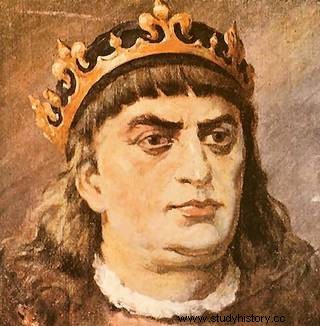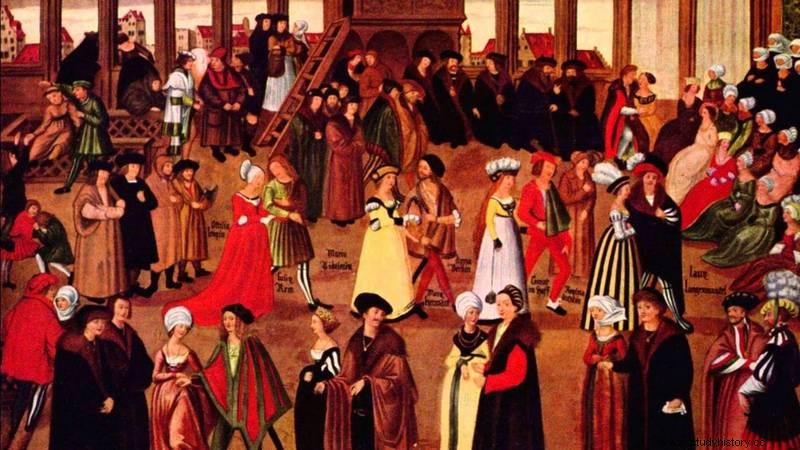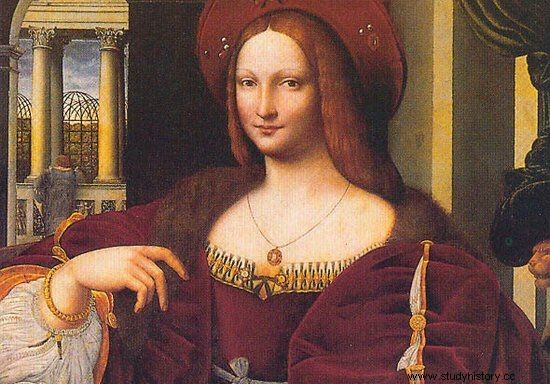History remembered her as a propagator of Italian cuisine and the owner of several dozen wonderful dresses. The famous Bona, however, was a true Renaissance man. The list of her activities and hobbies was almost endless.
Already from her family home, the queen had a great love for horses. In this respect, she almost felt at home in Poland. Perhaps the Jagiellonian manor house was not famous for its studs, but the Polish elite attached shocking attention to all equine matters. There were over a hundred "horse courtiers" around the king, and each of them was obliged to stand in the service when necessary with his horse retinue.
The royal documents carefully recorded the breeds and colors of all horses. For her part, Bona followed in her mother's footsteps and devoted herself to breeding purebred horses. In the Wawel stud that she founded, she kept over forty beautiful stallions.

Zygmunt Stary was surrounded by over a hundred "horse courtiers". Bona, who was a great horse lover since childhood, was definitely happy about it.
Dancing monarch
She also loved music and dancing. In the first years of her stay in Krakow, she often danced herself. In subsequent ones, she preferred to accompany the court houses, playing various instruments. She brought lively and melodic Italian dances to the Polish court, although she also moved with "strange grace" when German, Polish or even Russian pieces were played.
At Wawel, she organized the first real royal band. She also had private musicians at her side, including little boys who were brought from Italy to "make her time with their voice".

Bona loved music and dancing. We owe her our first true royal band.
The queen's yard
She collected antique vases. It employed the best European embroidery masters and spent a lot on the materials they needed. She loved jewels and beautiful plants. At Wawel, she set up a garden supplying herbs and vegetables for the royal table.
In Łobzów near Krakow, where she had a free hand and more space at her disposal, she created one of the most beautiful representative gardens in the whole country. It also had an aviary and a small zoo - located under one of the Wawel towers. Among other things, the real lions were kept in special cages.
Bona's court watchmaker
As if that were not enough, she probably became the first environmentalist in Poland. In each of her estates, she looked after the nature and even ordered the woodcutters to work so that they would not destroy the forest. As an exceptionally well-ordered person, she found great pleasure in collecting expensive clocks.
The harvest must have been large considering that the queen even hired a personal watchmaker. She had, among other things, a wonderful chronometer hidden inside a fan made of bird feathers and encrusted with jewels. For the conditions of the epoch, it was a real miracle of technology. Other similar devices preserved to our times date from the 18th century.
Obsession with medals
Were it not for Bona's inventories, today it would be hard to believe that a similar item was created in the 16th century. Bona also collected mirrors and medals, among others. The letter of courtier Fabian Wojanowski sent to Jan Dantyszek proves her true passion. In it he told about what happened at Wawel after the queen was handed an interesting new medal:“We talked a lot about the medal of Your Grace. Her Majesty has shown it to everyone many times. ”

Bona had a lively correspondence with her mother Isabella of Aragon (pictured). She also corresponded frequently with the notorious Lucrezia Borgia.
Monarchini also loved writing letters. Thanks to her, the first regular postal connections between Poland and Italy were established. Bona corresponded systematically with Isabella of Aragon.
Her biographer, Maria Bogucka, emphasized that she was a "very good daughter". However, Bona's writing did not end there. She often spoke to Lucrezia Borgia, and above all to the princes of Ferrara of the d'Este family. More than one hundred and forty of her letters have survived to this day.

The article was written in connection with the book by Kamil Janicki "Ladies of the Golden Age" (Horizon Label 2014). Buy with a discount on empik.com.
However, none of these pastimes and daily pleasures could compete with Bona's greatest hobby. She was ready to sacrifice anything for hunting. And it was on one of them that the future of the Jagiellonian dynasty was lost. After falling from a horse, she had a miscarriage, losing her second son and the chance to bear more children. The fate of the family then depended only on Zygmunt August.
Source:
You can learn more about the confusing history of the Jagiellonian family in Kamil Janicki's book Ladies of the golden age (Horizon Label 2014). The article is based on the literature and materials collected by the author during the work on the book. You can buy it at a discount on empik.com.

We recommend:
Another version of the above article appeared in the previous issue of "Newsweek Historia" (3/2015).
